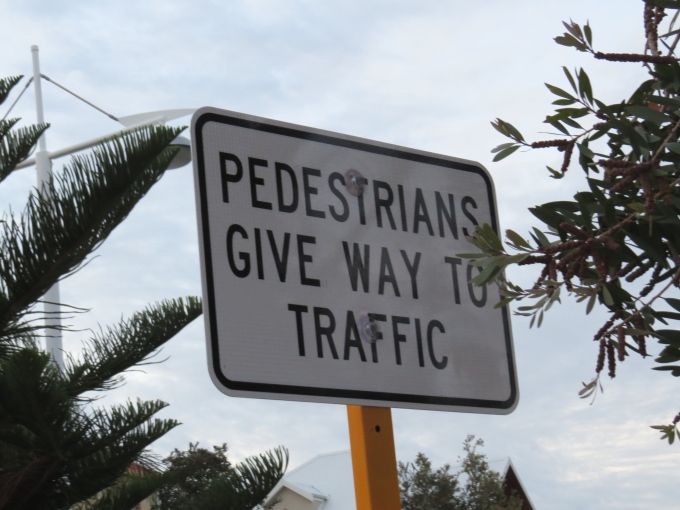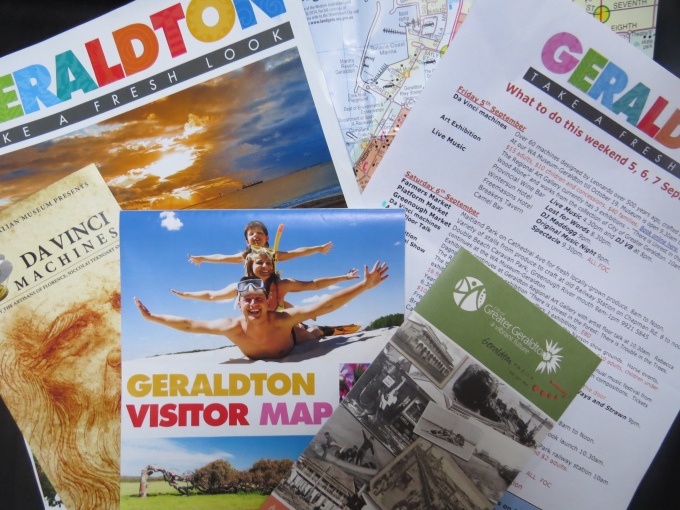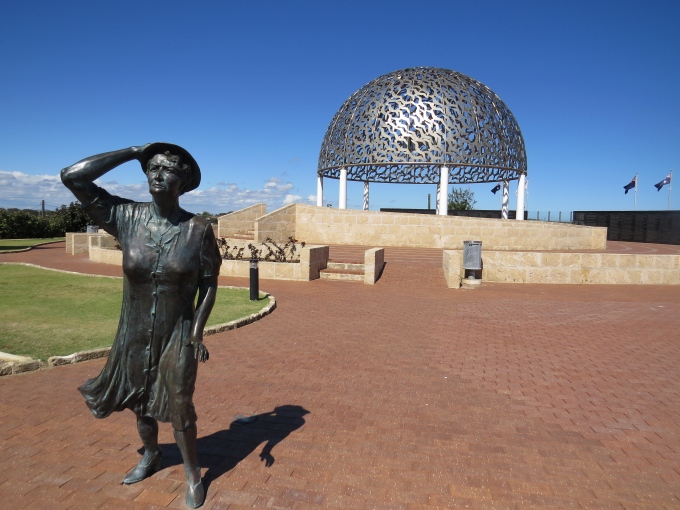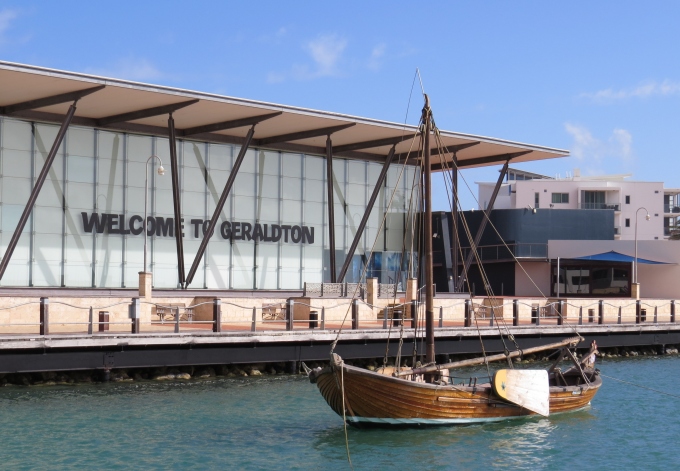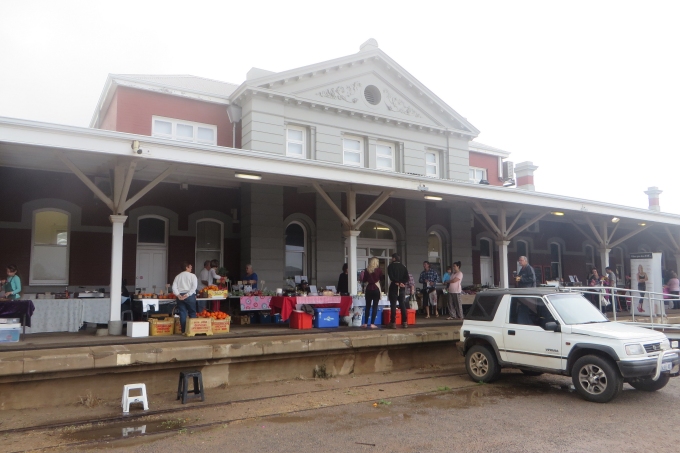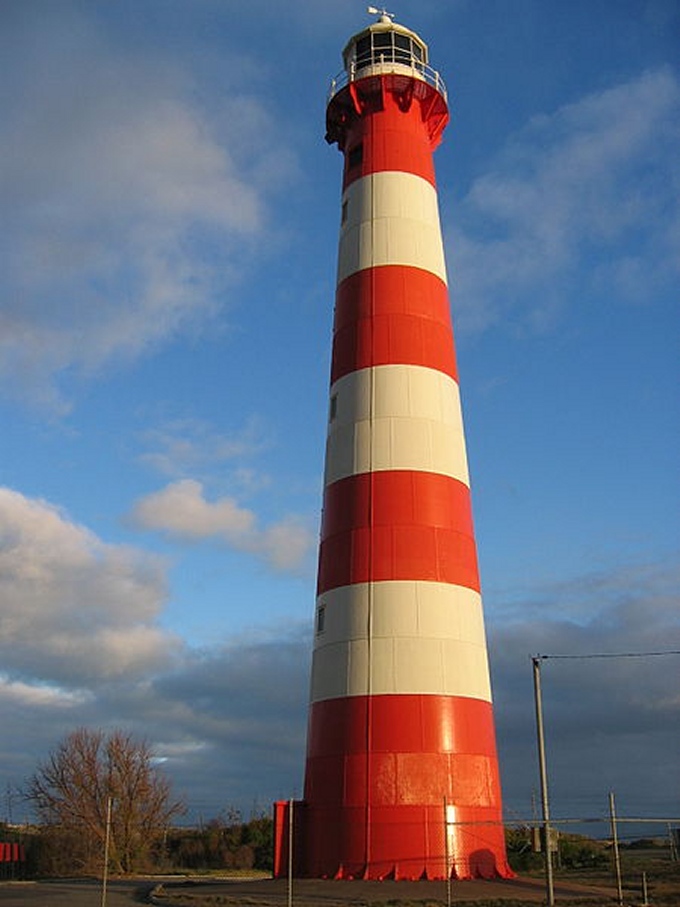Two Museums, a Gallery and Public Art
For a small city, Geraldton does well in the arts and culture department. The Western Australia Museum has a branch here that's only a couple blocks from the marina. We managed a visit between rain showers the other day. It's laid out well with three permanent galleries plus a visiting exhibition “DaVinci Machines”.

The first and largest area is devoted to local Aboriginal history and European settlements as well as local flora and fauna. It was interesting and informative. A second, dimly-lit gallery was dedicated to local shipwrecks, with special attention to the wreck of the Batavia, flagship of the Dutch East India Company's fleet, which was lost on Morning Reef in the Abrolhos in June 1629. Aspects of the shipwreck, subsequent mutiny, rescue and punishment of the crew are provided in detail along with salvaged items such as canons, silver coins, clay pipes and china fragments. Comparable to the Fremantle museum, a portico has been erected from the stones that the Batavia was carrying when she went on the reef.

The third permanent gallery was dedicated to the task of locating and identifying the war ship HMAS Sydney II, which was sunk in a deadly engagement with a German cruiser off the Western Australia coast in November 1941 with all 645 lives aboard lost. Both ships sunk and were not found until 2008.
A special exhibit entitled DaVinci's Machines was on display. “Created by the acclaimed Artisans of Florence in collaboration with the Niccolai Group, the exhibition consists of over 75 exhibits, reconstructed from the manuscripts (codices) and drawings of the 15th century Renaissance Man, Leonardo daVinci. He is described as a painter, sculptor, architect, musician, mathematician, engineer, inventor, anatomist, geologist, cartographer, botanist and writer. Wow! Some of his “machines” were placed strategically outside the museum and in the Visitor's Centre to entice folks to visit. It was an eye-opening exhibition. Never mind the Mona Lisa, this guy had detailed conceptual drawings for a helicopter, a flying machine, a self-propelled cart, a robotic knight, war machines … the list goes on.

The Geraldton Regional Art Gallery is housed in the former City Hall, a grand neo-classic style building. The gallery is small, but the artwork is well-spaced and aesthetically presented, reflecting off gleaming wood floors. The first floor is the city's collection which includes modern works, Aboriginal art and some older traditional landscapes as well as some textile and sculpture pieces.

The second floor was devoted to two special exhibitions … both dark. “There is unrest in the forest; there is trouble in the trees.” by Rebecca Dagnall is her photographic representation of the evil that exists in suburbia. It's satanic and evil symbols are presented in forested scenes.
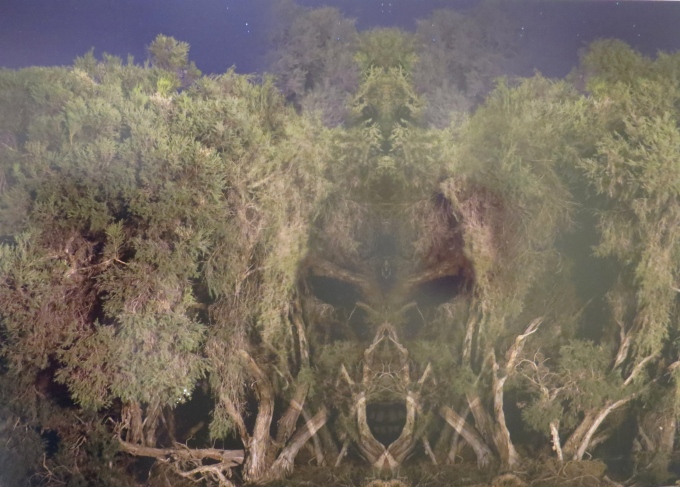
An exhibition of Olga Cironis' “Into the Woods Alone”, expresses her feelings on the Greek Civil War (1946-1949) which she and her family lived through and endured. Many of her pieces incorporated human hair which I found disconcerting. Though I don't pretend to understand all of her artistic work, I was fascinated with her quote: “...it seems that the world overall remains focused on diluting and whitewashing cultural differences to create a manageable uniformity.”
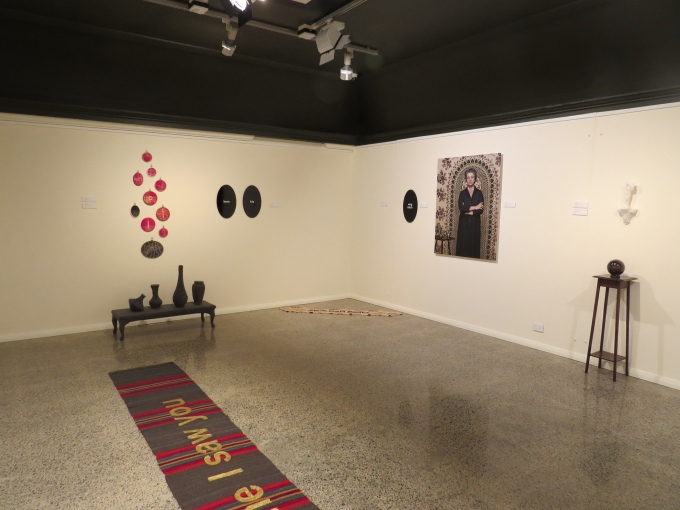
On my way out, I chatted with the volunteers who had greeted me when I arrived. They pointed me in the direction of the ACDC (Arts and Culture Development Council). The tiny gallery was in the midst of getting ready for an exhibition, but had no problem with my browsing. Lo and behold, the basketworks of our pleasant Visitor Centre lady, Glenda Blyth, were on exhibit.
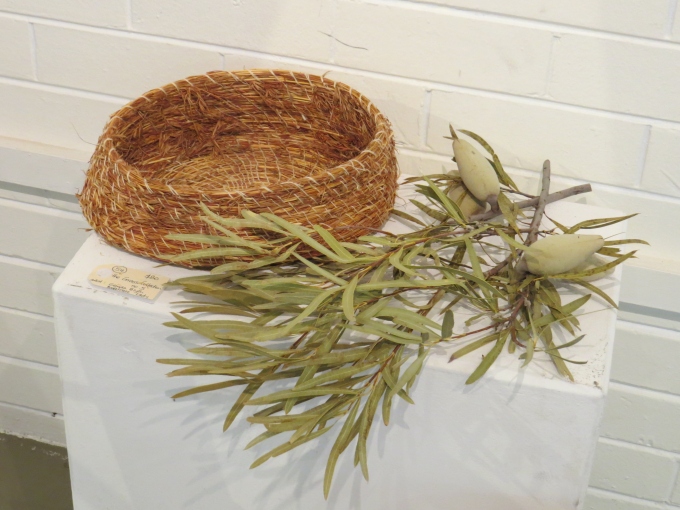
Also on display, works by Chris Bolton, mostly in textile and absolutely clever and wonderful.
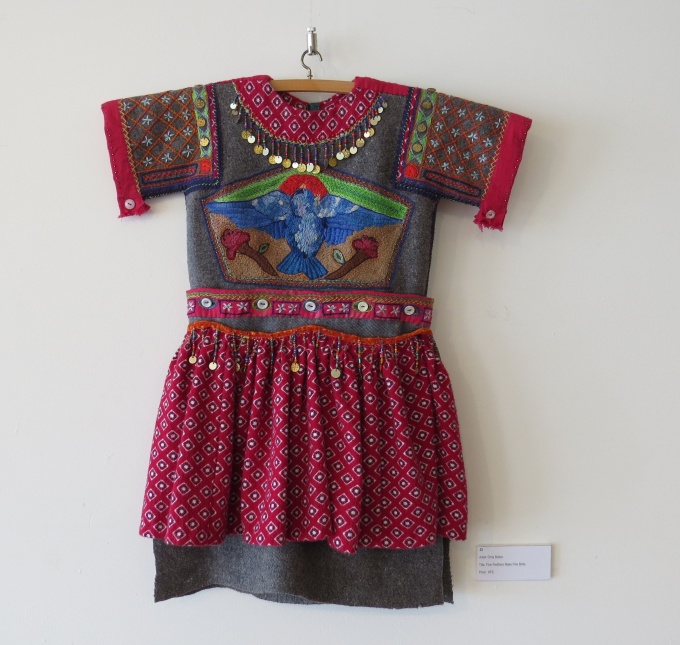
I walked home along the foreshore and encountered several statues and pieces of public art. Two in particular close to the marina caught my eye. One was an “Batavian” by Tony Jones, a multi-faceted sculpture incorporating maritime images, a figurehead and symbols of the Dutch East India Company (VOC).

The other piece that piqued my interest was “Bill's Rock” by Bill Newbold, a huge granite rock fitted with a numbered dial which looked like a huge handle. It was a sun dial, but it required several mathematical adjustments to come up with the time … plus it required sun. I brought David back for a look. We never did figure out the time.






